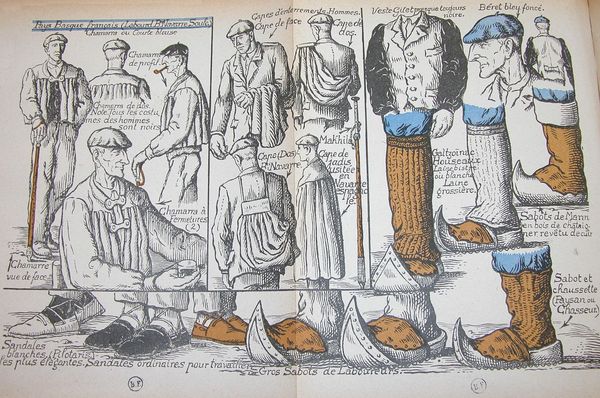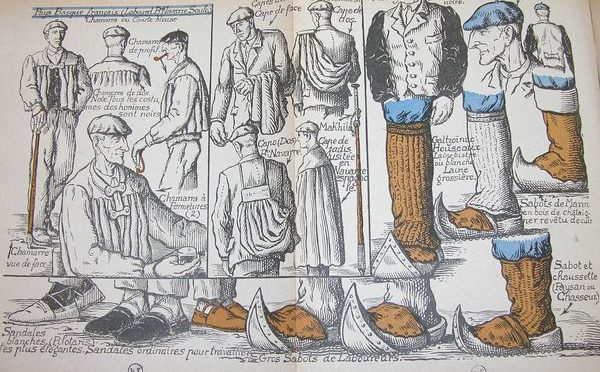The last one hundred years has seen more change than any other time in our history. The way that place such as the Basque Country are now would be shocking to anyone born one hundred years ago, and the reverse might be true as well. So much has changed. Having a looking glass into the past helps us appreciate that change. Jean Paul “Pablo” Tillac gave us such a looking glass. He devoted some 2000 drawings to Basque subjects, capturing them in their daily life as they played pelota, attended church, or participated in carnivals.

- Tillac was born in Angoulême, France in 1880. While not in the Basque Country, his maternal grandfather was Basque. He began study at the School of Fine Arts in Paris when he was 17. Between 1903 and 1910, he toured the world, primarily the United Kingdom, the United States, and Cuba. He eventually returned to Europe and visited his brother in Lapurdi. He fell in love with the rural Basque life and settled in Kanbo somewhere between 1919 and 1921.
- The romantic view of the Basques as a pre-Indo-European peoples was en vogue at the time and this exoticness attracted Tillac, as it did many others. However, as opposed to those who resonated with the luxurious summer vacation spot, Tillac delved into the Basque world. Everything about the Basques fascinated him – witchcraft, festivities, the ball, fishing, the tavern, the market – and he was prolific in his drawings about them.
- Paul Faure described Tillac as “a draftsman, engraver and illustrator who fixes the scenes and types of the Basque Country with such minute detail and such perfection that his work… offers the most splendid and most complete document that exists and that, without a doubt, there will be about this strange and seductive country”. His work has seen increasing value. In 2010, his Les joueurs de pelote, Andiak Egina – depeciting a jai alai player with a fronton in the background – sold for $182,661.
- Tillac also illustrated for many clients, including large publishing houses, with his work gracing the writings of Jack London. Later, during both the Spanish Civil War and World War II, he used his talents to document the two wars, including the occupation of Kanbo by the Germans.
- Tillac died in Kanbo on October 15, 1969. There are collections of his in the Basque Museum of Baiona and in the San Telmo Museum. During his lifetime, he became a member of Eusko Ikaskuntza, the Society of Basque Studies, where he often commented on ethnographic and artistic topics.
- A gallery of his work can be found here.
Auñamendi Entziklopedia. Tillac, Jean Paul. Auñamendi Encyclopedia, 2022. Available at: https://aunamendi.eusko-ikaskuntza.eus/en/tillac-jean-paul/ar-139866/
Discover more from Buber's Basque Page
Subscribe to get the latest posts sent to your email.


